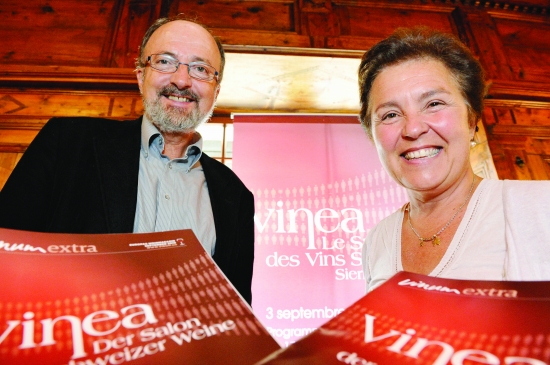
This has been a great discovery. Only few hours from Geneva, in Sierre, in the heart of the Valais, every year has appointment in September Salon Vinea of Vinos Swiss Wines.
I know that many of you are willing to discover the ¨almost secret¨ marvels of these wines, because only 2 % of Swiss Wines manage to be exported. In different post I will be putting you up to date.
The Association VINEA is the organism in charge of the Mondial du Pinot Noir, of Mondial du Merlot, of Salon Vinea of Swiss Wines and of other events, with an impeccable direction carried out by Elisabeth Pasquier and her team.
François Murisier and Elisabeth Pasquier
President and Director of Salon Vinea of Swiss Wines
What do we know about Swiss wines? A little bit of the white variety Chasselas, of the Dôle (red wine made out of Pinot Noir and Gamay, of Fendant (another name for Chasselas), that the red wines are made principally out of the varieties Pinot Noir and Gamay, and that the prices are high … but the Swiss wines are much more than that!
Regarding to the high prices it is simple, principally this is due to three factors: the high costs of production (not mechanization, vineyards in hillsides), the powerful Swiss economy, and the big local demand that doesn´t allow that the wines manage to be exported.
Certainly, the white variety most planted in Switzerland is Chasselas, also known as Fendant (in the Valais), Dorin (in Vaud), Perlan (in Geneva) or Gutedel (in the Swiss German speaking); and the most planted red variety is Pinot Noir. But there is much more than that!
The most planted second white grape variety is Sylvaner, which gives place to wines with more body and which are sell as Johannisberg.
There are also marvellous and local grape varieties like the white Petit Arvine, Amigne, Humagne Blanche, and the red ones as Humagne Rouge and Cornalin. I also tasted a really interesting Merlots of Ticino and discovered the existence of the classification Gran Cru for some Swiss wines.
Another peculiarity to be able to understand the labels, Marsanne Blanche, also is known as Ermitage, and with Muscat du Valais they refer to the white Muscat à Petit Grain, and for Païen or Heida to the Savagnin Blanc.
The principal wine producing regions are the following ones:
Valais (5070 ha): the biggest wine region of Switzerland, where we find principally the white grape variety Chasselas and the local white varieties like Petit Arvine, Amigne, Humagne Blanche, and the reed one Cornalin, giving place to really unique wines. This region would be unpracticable without the passionate vine-growers and producers who support the vineyards in terraces with work and passion, where the labour of the man has to be carried out without any type of mechanization.
Vaud (3818 ha): the second biggest wine region of Switzerland, by Lac Leman or Lake Geneva, the white grape varieties Chasselas and the red one Gamay are the principal ones. We can also find other white grape varieties like Chardonnay, Pinot Gris, Doral and Pinot Blanc, and the other more predominant red grape varieties are Pinot Noir, Gamaret and Garanoir. The region of Vaud divided in the following sub-regions: The Côte, Lavaux, Chablais, and Côtes de l’Orbe with Bonvillars.
Ticino (1070 ha): the Swiss Italian speaking part. We find principally the red grape variety Merlot giving place to wines in two different styles, one fruity and light and a different one with ageing, toasty notes and more concentrated. We can also find red grape varieties like Pinot Noir, Cabernet Franc, Cabernet Sauvignon and Gamaret, and white ones like Chardonnay and Sauvignon Blanc followed by Semillon, Chasselas, Doral, Muller Thurgau, Pinot Gris and Viognier.
In Neuchatel’s region (591 ha) we find the speciality of Oeil-de-Perdix, their emblem wine, which is delicate rosé wine of Pinot Noir, which is also sometimes vinified white giving place to the so called wine ¨Perdrix Blanche ¨. The principal grape varieties of the area are Pinot Noir and Chasselas, together with the white grape varieties Chardonnay, Doral, Pinot Gris, Pinot Blanc and Gewürztraminer.
Swiss German speaking part (2682 ha): including Zurich, Schaffhaussen, Grisons, Aargau, St. Gallen, Basel and Luzern amongst others. Pinot Noir is the main red grape variety and also we find some Merlot and Syrah. Of the white grape varieties, it dominates Muller-Thurgau (which is a cross of Riesling with Madeleine Royale, called sometimes amongst Switzerland Riesling-Sylvaner)
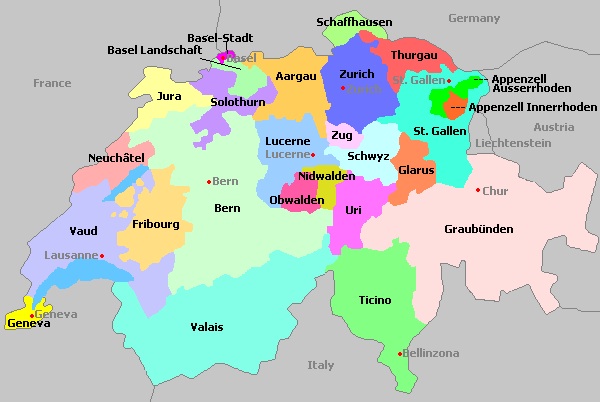
Switzerland is a federal republic of 26 cantons or estates, of which only one is not a wine producer (Uri) and also we must remember that there are 3 principal languages, which are French in the Suisse Romande, German in the Suisse alémanique and Italian in the Suisse italienne:
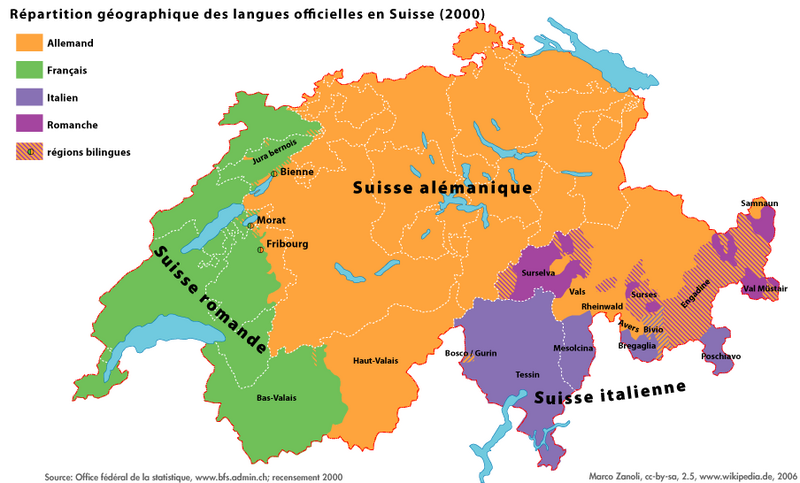
Switzerland has been always associated with skiing, chocolate, nature, lakes, banks, the ONU, fondue, watches, but also it possesses an enormous wine tradition to discover, with almost 15000 hectares of vineyard registered in 2009 (according to OVI = Organisation Internationale de la Vigne et du Vin)
- Swiss Wine Guide (Association VINEA)
- http://romanduvin.ch/ – Alexandre Truffer
- http://vinsconfederes.ch/ – Laurent Probst
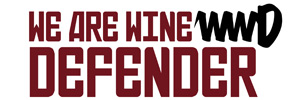
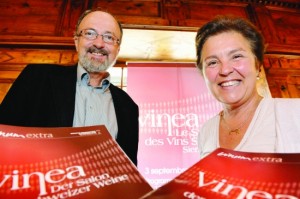

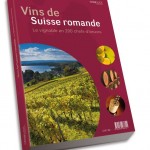

Leave a Reply
You must be logged in to post a comment.